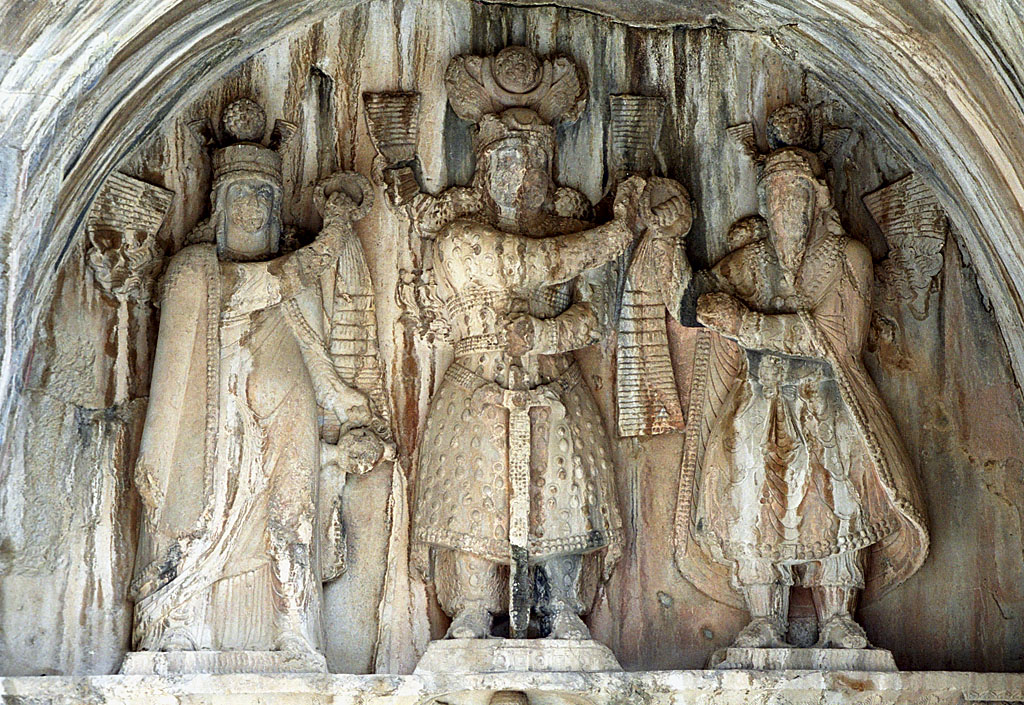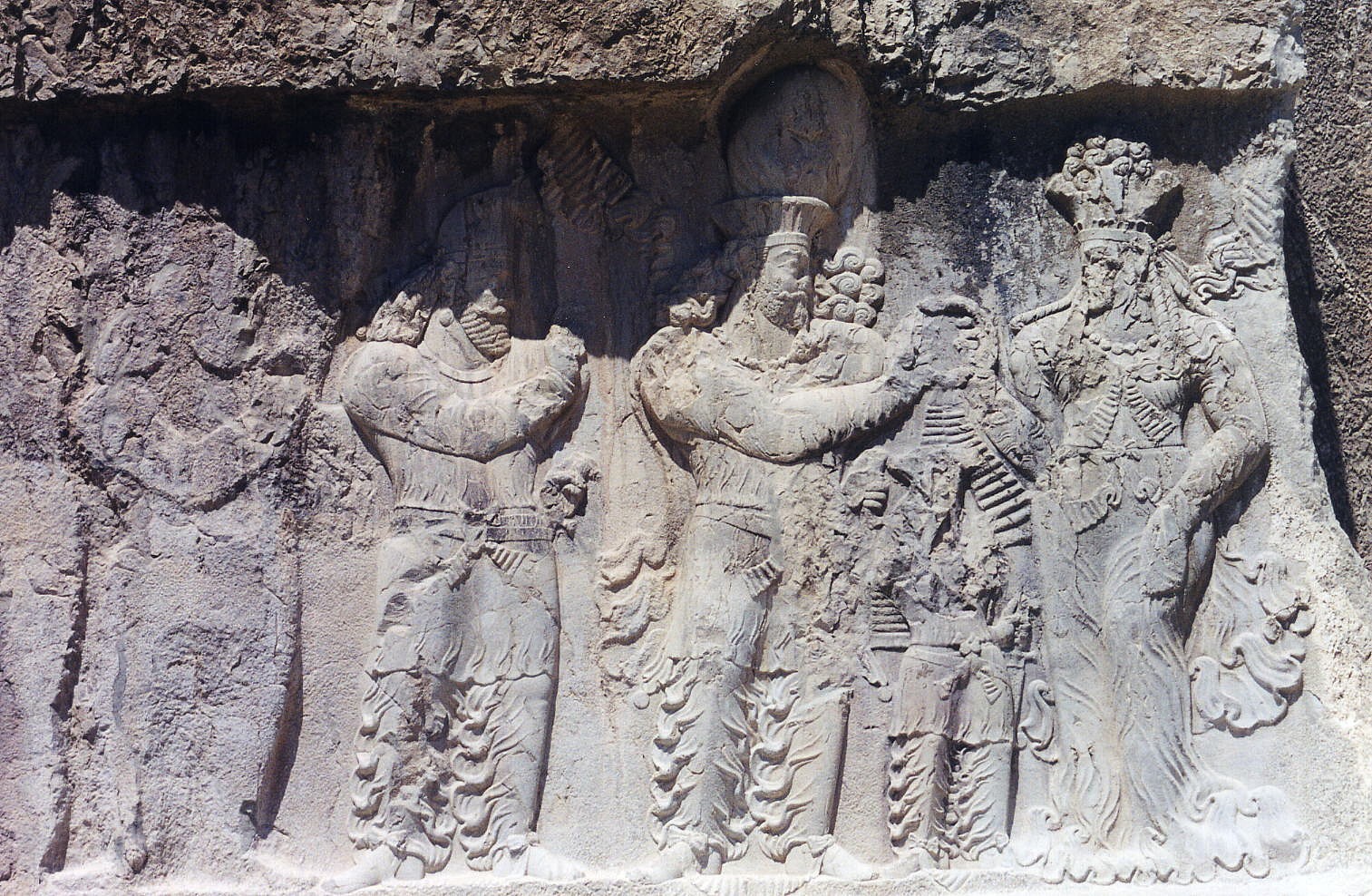|
Anahita (spider)
''Anahita'' is a genus of wandering spiders first described by Ferdinand Karsch in 1879. Species it contains twenty-nine species, many from Africa and Asia: *''Anahita aculeata'' ( Simon, 1897) – West, Central Africa *''Anahita blandini'' Benoit, 1977 – Ivory Coast *'' Anahita centralis'' Benoit, 1977 – Central Africa *''Anahita concrassata'' Benoit, 1977 – Burundi *''Anahita concreata'' Benoit, 1977 – Congo *''Anahita concussor'' Benoit, 1977 – Congo *'' Anahita denticulata'' (Simon, 1884) – Myanmar, Indonesia (Simeulue) *''Anahita faradjensis'' Lessert, 1929 – Congo *'' Anahita fauna'' Karsch, 1879 (type) – Russia (Far East), China, Korea, Japan *'' Anahita feae'' ( F. O. Pickard-Cambridge, 1902) – Myanmar *''Anahita jianfengensis'' Zhang, Hu & Han, 2011 – China *'' Anahita jinsi'' Jäger, 2012 – China *''Anahita jucunda'' ( Thorell, 1897) – Myanmar *''Anahita lineata'' Simon, 1897 – Ivory Coast, Congo *''Anahita lycosina'' (Simon, 1897) – West A ... [...More Info...] [...Related Items...] OR: [Wikipedia] [Google] [Baidu] |
Ctenidae
Wandering spiders (''Ctenidae'') are a family of spiders that includes the Brazilian wandering spiders. These spiders have a distinctive longitudinal groove on the top-rear of their oval carapace similar to those of the Amaurobiidae. They are highly defensive and venomous nocturnal hunters. Wandering spiders are known to hunt large prey, for example hylid species ''Dendropsophus branneri.'' Despite their notoriety for being dangerous, only a few members of '' Phoneutria'' have venom known to be hazardous to humans, but the venoms of this family are poorly known, so all larger ctenids should be treated with caution. Genera , the World Spider Catalog accepts the following genera: *'' Acantheis'' Thorell, 1891 — Asia *''Acanthoctenus'' Keyserling, 1877 — South America, Central America, Jamaica, Mexico *''Africactenus'' Hyatt, 1954 — Africa, India *''Afroneutria'' Polotow & Jocqué, 2015 — Africa *''Amauropelma'' Raven, Stumkat & Gray, 2001 — Asia, Australia *''Amicactenus ... [...More Info...] [...Related Items...] OR: [Wikipedia] [Google] [Baidu] |
Ferdinand Karsch
Ferdinand Anton Franz Karsch or Karsch-Haack (2 September 1853, in Münster – 20 December 1936, in Berlin) was a German arachnologist, entomologist and anthropologist. The son of a doctor, Karsch was educated at the Friedrich Wilhelm University in Berlin and published a thesis on the gall wasp in 1877. From 1878 to 1921 he held the post of curator at the Museum für Naturkunde Berlin. Between 1873 and 1893, he published a catalogue of the spiders of Westphalia; he also published numerous articles on the specimens that the museum received from various explorers and naturalists working in Africa, in China, in Japan, in Australia, etc. This publication of others' work sometimes led to disputes over priority and nomenclature, for example with Pickard-Cambridge. Alongside his zoological activities, he published many works on sexuality and, in particular, homosexuality in both the animal kingdom and in so-called "primitive" peoples, including ''Das gleichgeschlechtliche L ... [...More Info...] [...Related Items...] OR: [Wikipedia] [Google] [Baidu] |
Anahita Jianfengensis
Anahita is the Old Persian form of the name of an Iranian goddess and appears in complete and earlier form as ('), the Avestan name of an Indo-Iranian cosmological figure venerated as the divinity of "the Waters" ( Aban) and hence associated with fertility, healing and wisdom. There is also a temple named Anahita in Iran. Aredvi Sura Anahita is ''Ardwisur Anahid'' (اردویسور آناهید ) or ''Nahid'' (ناهید) in Middle and Modern Persian, and ''Anahit'' in Armenian. An iconic shrine cult of Aredvi Sura Anahita was – together with other shrine cults – "introduced apparently in the 4th century BCE and lasted until it was suppressed in the wake of an iconoclastic movement under the Sassanids.". The symbol of goddess Anahita is the Lotus flower. Lotus Festival (Persian: Jashn-e Nilupar) is an Iranian festival that is held on the sixth day of July. Holding this festival at this time was probably based on the blooming of lotus flowers at the beginning of su ... [...More Info...] [...Related Items...] OR: [Wikipedia] [Google] [Baidu] |
Ludwig Carl Christian Koch
Ludwig Carl Christian Koch (8 November 1825 – 1 November 1908) was a German entomologist and arachnologist. He was born in Regensburg, Germany, and died in Nuremberg, Germany. He studied in Nuremberg, initially law, but then turned to medicine and science. From 1850, he practiced as a physician in the Wöhrd district of Nuremberg. He is considered among the four most influential scientists on insects and spiders in the second half of the 19th century. He wrote numerous works on the arachinoids of Europe, Siberia, and Australia. His work earned him worldwide reputation as "Spider Koch". Sometimes confused with his father Carl Ludwig Koch (1778–1857), another famous arachnologist, his name is abbreviated L.Koch on species descriptions; his father's name is abbreviated C.L.Koch Pierre Bonnet. ''Bibliographia araneorum,'' (1945) Les frères Doularoude (Toulouse). Works ''Die Arachniden Australiens'' (1871-1883), his major work on Australian spiders, was completed by Eugen ... [...More Info...] [...Related Items...] OR: [Wikipedia] [Google] [Baidu] |
Anahita Pallida
Anahita is the Old Persian form of the name of an Iranian goddess and appears in complete and earlier form as ('), the Avestan name of an Indo-Iranian cosmological figure venerated as the divinity of "the Waters" ( Aban) and hence associated with fertility, healing and wisdom. There is also a temple named Anahita in Iran. Aredvi Sura Anahita is ''Ardwisur Anahid'' (اردویسور آناهید ) or ''Nahid'' (ناهید) in Middle and Modern Persian, and ''Anahit'' in Armenian. An iconic shrine cult of Aredvi Sura Anahita was – together with other shrine cults – "introduced apparently in the 4th century BCE and lasted until it was suppressed in the wake of an iconoclastic movement under the Sassanids.". The symbol of goddess Anahita is the Lotus flower. Lotus Festival (Persian: Jashn-e Nilupar) is an Iranian festival that is held on the sixth day of July. Holding this festival at this time was probably based on the blooming of lotus flowers at the beginning of su ... [...More Info...] [...Related Items...] OR: [Wikipedia] [Google] [Baidu] |
Embrik Strand
Embrik Strand (2 June 1876 – 3 November 1947) was an entomologist and arachnologist who classified many insect and spider species including the greenbottle blue tarantula. Life and career Strand was born in Ål, Norway. He studied at the University of Kristiania (now University of Oslo). Around 1900 he focused on collecting insect specimens from Norway. These are now deposited at the university's museum, where he worked as a curator from 1901 to 1903. After studying at the University of Oslo Strand traveled in Norway from 1898 to 1903 collecting a great number of insects. For part of this time (1901–1903) he was a conservator in the museum of zoology of the university. He then left for Germany where he continued his studies of zoology at the University of Marburg (1903), then he worked with State Museum of Natural History Stuttgart (1905) and, later, that of Tübingen and then with Senckenberg Museum in Frankfurt. From 1907, he worked with Natural History Museum, ... [...More Info...] [...Related Items...] OR: [Wikipedia] [Google] [Baidu] |
Anahita Nathani
Anahita is the Old Persian form of the name of an Iranian goddess and appears in complete and earlier form as ('), the Avestan name of an Indo-Iranian cosmological figure venerated as the divinity of "the Waters" ( Aban) and hence associated with fertility, healing and wisdom. There is also a temple named Anahita in Iran. Aredvi Sura Anahita is ''Ardwisur Anahid'' (اردویسور آناهید ) or ''Nahid'' (ناهید) in Middle and Modern Persian, and ''Anahit'' in Armenian. An iconic shrine cult of Aredvi Sura Anahita was – together with other shrine cults – "introduced apparently in the 4th century BCE and lasted until it was suppressed in the wake of an iconoclastic movement under the Sassanids.". The symbol of goddess Anahita is the Lotus flower. Lotus Festival (Persian: Jashn-e Nilupar) is an Iranian festival that is held on the sixth day of July. Holding this festival at this time was probably based on the blooming of lotus flowers at the beginning of su ... [...More Info...] [...Related Items...] OR: [Wikipedia] [Google] [Baidu] |
Anahita Maolan
Anahita is the Old Persian form of the name of an Iranian goddess and appears in complete and earlier form as ('), the Avestan language, Avestan name of an Indo-Iranian languages, Indo-Iranian cosmological figure venerated as the divinity of "the Waters" (Aban) and hence associated with fertility, healing and wisdom. There is also a temple named Anahita in Iran. Aredvi Sura Anahita is ''Ardwisur Anahid'' (اردویسور آناهید ) or ''Nahid'' (ناهید) in Middle Persian, Middle and Persian language, Modern Persian, and ''Anahit'' in Armenian language, Armenian. An iconic shrine cult of Aredvi Sura Anahita was – together with other shrine cults – "introduced apparently in the 4th century BCE and lasted until it was suppressed in the wake of an iconoclastic movement under the Sassanid Empire, Sassanids.". The symbol of goddess Anahita is the Lotus flower. Lotus Festival (Persian: Jashn-e Nilupar) is an Iranian festival that is held on the sixth day of July. Holdin ... [...More Info...] [...Related Items...] OR: [Wikipedia] [Google] [Baidu] |
Anahita Lycosina
Anahita is the Old Persian form of the name of an Iranian goddess and appears in complete and earlier form as ('), the Avestan name of an Indo-Iranian cosmological figure venerated as the divinity of "the Waters" ( Aban) and hence associated with fertility, healing and wisdom. There is also a temple named Anahita in Iran. Aredvi Sura Anahita is ''Ardwisur Anahid'' (اردویسور آناهید ) or ''Nahid'' (ناهید) in Middle and Modern Persian, and ''Anahit'' in Armenian. An iconic shrine cult of Aredvi Sura Anahita was – together with other shrine cults – "introduced apparently in the 4th century BCE and lasted until it was suppressed in the wake of an iconoclastic movement under the Sassanids.". The symbol of goddess Anahita is the Lotus flower. Lotus Festival (Persian: Jashn-e Nilupar) is an Iranian festival that is held on the sixth day of July. Holding this festival at this time was probably based on the blooming of lotus flowers at the beginning of su ... [...More Info...] [...Related Items...] OR: [Wikipedia] [Google] [Baidu] |
Anahita Lineata
Anahita is the Old Persian form of the name of an Iranian goddess and appears in complete and earlier form as ('), the Avestan name of an Indo-Iranian cosmological figure venerated as the divinity of "the Waters" ( Aban) and hence associated with fertility, healing and wisdom. There is also a temple named Anahita in Iran. Aredvi Sura Anahita is ''Ardwisur Anahid'' (اردویسور آناهید ) or ''Nahid'' (ناهید) in Middle and Modern Persian, and '' Anahit'' in Armenian. An iconic shrine cult of Aredvi Sura Anahita was – together with other shrine cults – "introduced apparently in the 4th century BCE and lasted until it was suppressed in the wake of an iconoclastic movement under the Sassanids.". The symbol of goddess Anahita is the Lotus flower. Lotus Festival (Persian: Jashn-e Nilupar) is an Iranian festival that is held on the sixth day of July. Holding this festival at this time was probably based on the blooming of lotus flowers at the beginning of summe ... [...More Info...] [...Related Items...] OR: [Wikipedia] [Google] [Baidu] |



